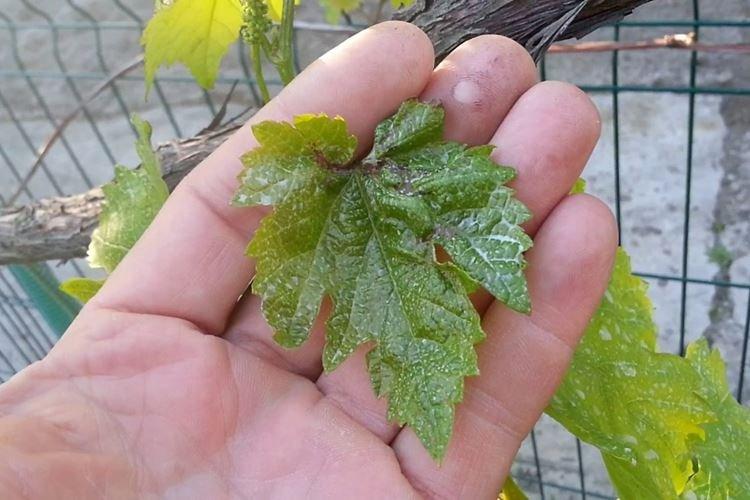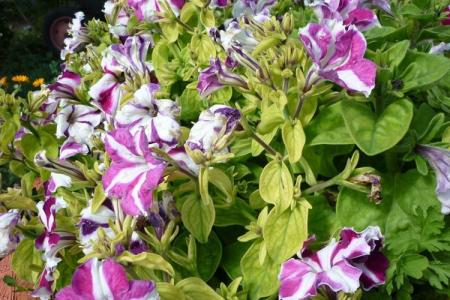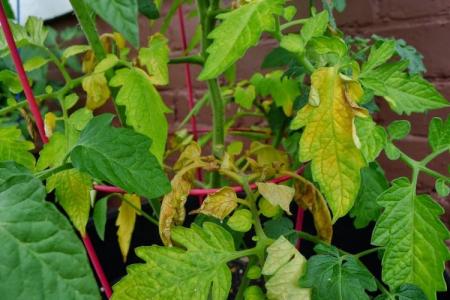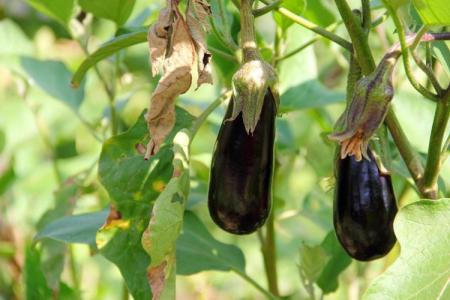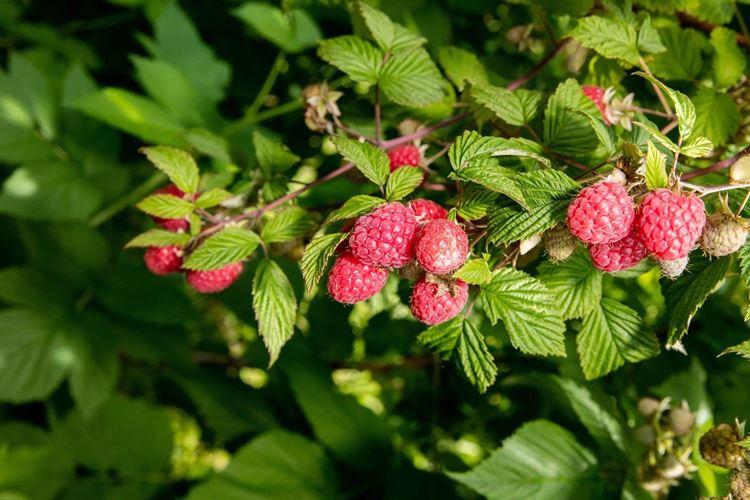
When a raspberry tree suddenly changes color or dries up, he urgently needs help. Raspberry leaves do not just turn yellow - in most cases, this is an alarm. Unsuitable conditions, diseases, frost or lack of fertilizers - all this affects the condition of the berry and the future harvest. Therefore, we have already figured out why this happens!
Main reasons
Like all horticultural crops, raspberry leaves are instantly affected by a lack of water or sun. They change color and rot from high humidity, and dry out from heat and dryness. Lack of nitrogen has a bad effect on the state of the green mass, but an excess of fertilizers also leads to various disturbances. But there is still a fungus, infections and viruses, pests and other reasons!

Leaves turn yellow from the edge
When yellowness spreads from the edges, and the tips dry out first, it is most likely a problem in the wrong conditions.
1. The bushes have become too thick and they are simply cramped. Remember to thin out the seedlings as needed to keep them healthy.
2. Raspberries lack light, which provides photosynthesis with the presence of green plant pigment. Do not plant berries in the shade or between other tall plants.
3. Raspberries are resistant to moisture deficiency, but severe drought is also dangerous for them. In the heat, raspberries need to be watered abundantly, 3-4 buckets at a time, about 6-7 times a season.
4. If the water for irrigation was too cold, the plant simply freezes. Use liquid at least at room temperature.
5. If the yellow leaves soften and begin to rot, the problem may be an excess of moisture. Do not plant berries in areas that are too humid. When watering, make sure that the soil is not too wet, and even more so - puddles do not stagnate. Do not forget about regular soil loosening and good drainage.
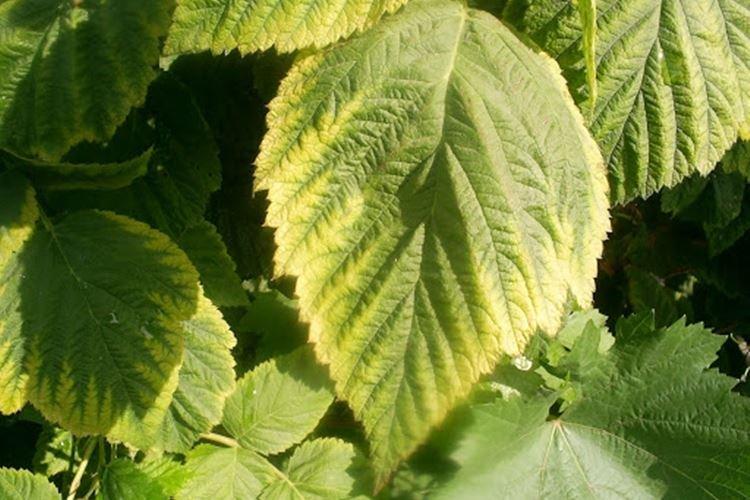
Raspberry seedlings turn yellow
After planting, the seedlings started well, blossomed, and then suddenly began to turn yellow and dry? In addition to the standard reasons, several more new ones are added:
1. Perhaps, when planting, the rhizomes were damaged or affected by a fungus. They should always be carefully examined and treated with antiseptics.
2. In pursuit of nitrogen fertilizers, novice gardeners often forget to apply potassium on time. And he is also vital for young seedlings.
3. Poor land preparation leads to the same consequences. This is acidity, insufficient nutritional value, too dense and not loosened soil.
4. On wetlands or in close proximity to groundwater, yellowing of raspberries is inevitable.
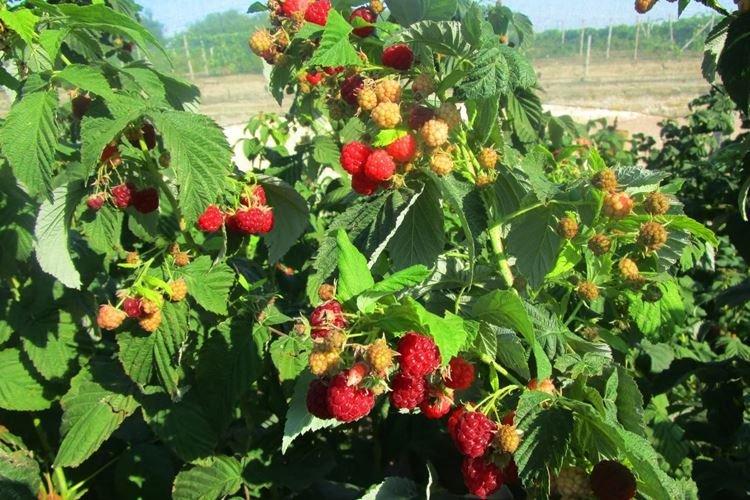
Leaves turn yellow and dry from bottom to top
It happens that after a cold spring, the leaves begin to turn yellow, dry out and fall off the bottom layer. It might just be a stress response that goes away on its own. This happens, for example, with a greenhouse berry, if you forget to close the greenhouse door.
But if the symptoms do not stop and the disease rises higher and higher, it is most likely a verticillary wilting. To avoid it, stick to crop rotation, always disinfect the planting material and do not forget seasonal fungicide treatment.
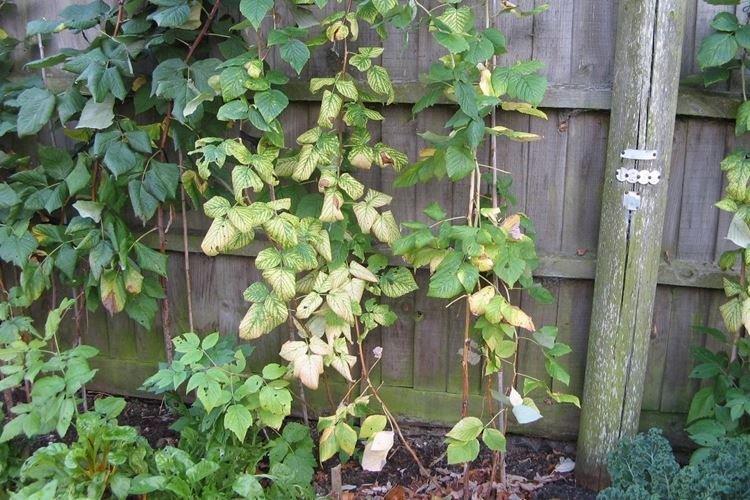
Leaves turn yellow and grow poorly
If the leaves grow smaller, less often, take longer or become deformed, the problem may be in the composition of the soil. Raspberries are not suitable for every soil, and they need regular feeding.
1. Leaves turn yellow due to lack of magnesium, iron, zinc, boron or other nutrients.
2. Chlorosis and grinding develops due to too acidic or too alkaline soil. Alkaline soil should be acidified with potassium sulfate, and acidic soil should be diluted with lime, ash or chalk.
3. Raspberries will react quickly if you forget about mineral additives - chelates, sulfates, dolomite flour, complex seasonal fertilizers.
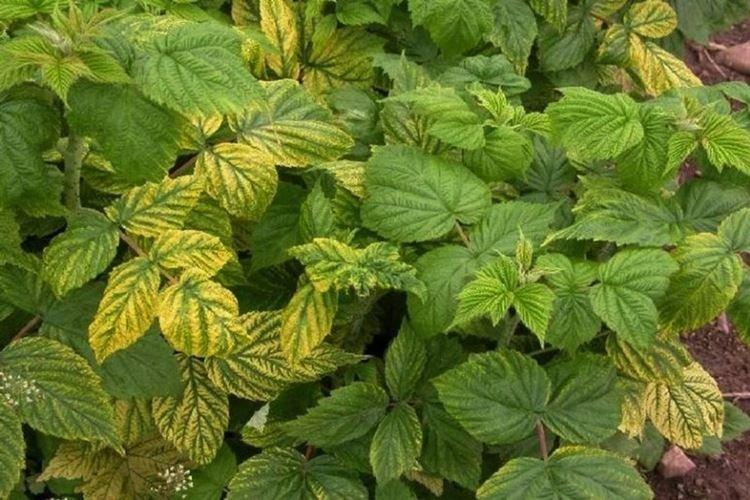
Leaves turn yellow and fall off
If there are no other symptoms, everything is fine with the soil and watering, and the raspberries are definitely not sick - the problem may be a cold snap. The berry is very sensitive to a decrease in air and ground temperature. Therefore, during unexpected frosts in the middle of the season, it is recommended to cover the seedlings.
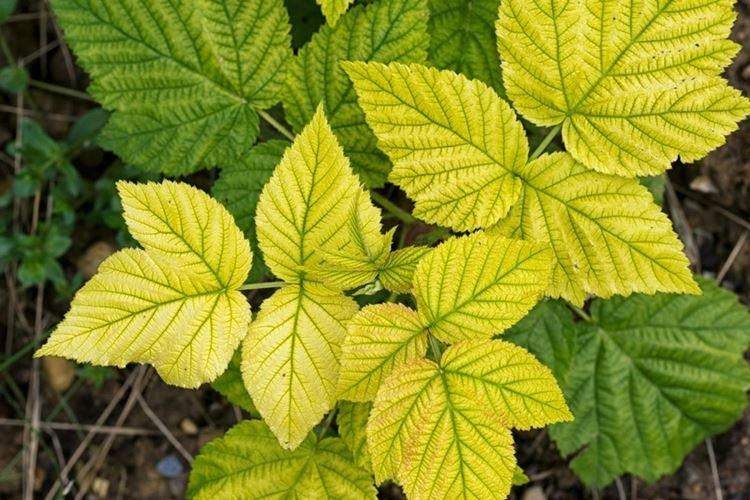
Leaves turn yellow at the end of the season
At the end of the season, yellowing of the leaves is a normal natural process. The life cycle of any plant ends, and it gradually goes into a state of dormancy, and for this you need to get rid of excess leaves. Only spring and summer yellowing is abnormal.
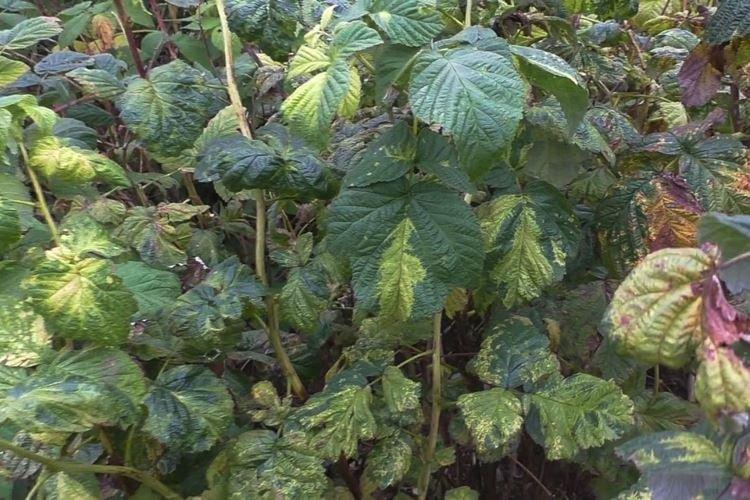
Leaves turn yellow spots and dry
If the leaf plates are covered with chaotic spots of all shades of yellow, red or brown, this is a sure sign of disease. In most cases, such bushes need to be destroyed, and the soil should be treated with antiseptics and left for a couple of years. Here are some of the most common problems:
1. Root cancer appears after a drought, when the root system is damaged or in too alkaline soil. The bacteria spread more quickly if raspberries are grown in one place for years. Gradually, growths-tumors are formed, which destroy the planting.
2. Rust is a fungus and a consequence of too high humidity in the heat. Not only leaves are spoiled, but also the harvest, and winter hardiness also decreases significantly.
3. With chlorosis, the leaves turn yellow along the veins, and only then the disease gradually covers the entire plate. When planting, choose resistant varieties and do not forget to carry out seasonal insecticide treatment.
4. Mosaic - a whole group of viruses that are spread by garden pests. Yellowing is the lesser of the troubles of an incurable disease. Bumps and rough irregularities appear on the surface of the plates.
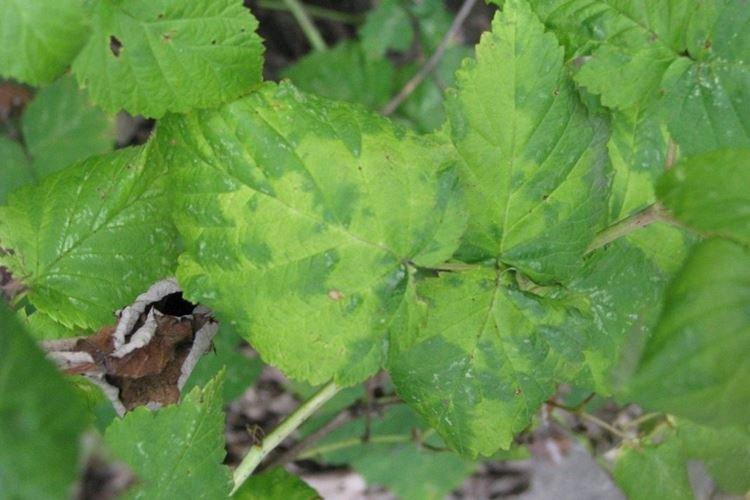
Leaves turn yellow and dry due to pests
Garden pests carry infections and viruses that can destroy an entire planting. They eat leaves and shoots, suck the juices out of them, and the plates begin to wither and turn yellow.
1. Aphids are the most dangerous vector of mosaics and other incurable viruses. Usually it hides on the inside of the plates and seems to leave a plaque on the surface.
2. Berry weevils eat cuttings of leaves, which is why they cannot grow normally. Later, pests move to buds and pedicels.
3. Caterpillars of different butterflies eat up passages in shoots and pupate. Weak and diseased leaves grow on the damaged branches, the shoots do not bear fruit, and then completely dry up.
4. Spider mites leave a whitish bloom on the leaves and drink juices from them. First, the plates are covered with small yellow-brown dots, then they wither and dry out.
